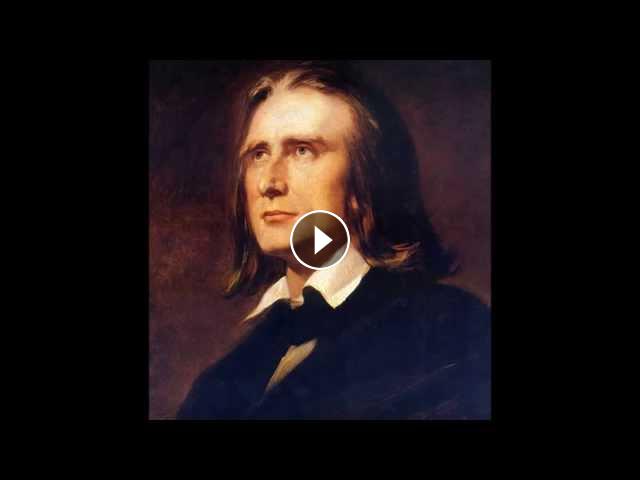The Mephisto Waltzes are four waltzes composed by Franz Liszt in 1859-62, 1880–81, 1883 and 1885. Nos. 1 and 2 were composed for orchestra, and later arranged for piano, piano duet and two pianos, whereas 3 and 4 were written for piano only. Of the four, the first is the most popular and has been frequently performed in concert and recorded.
Mephisto Waltz No. 1 is the best-known of the series and, together with No. 3, the most praised musically.
Mephisto Waltz No. 1, Der Tanz in der Dorfschenke (The Dance in the Village Inn) is the second of two short works he wrote for orchestra. While the work preceding it, Midnight Procession ("Der nächtliche Zug"), is rarely given (though both works have been recorded together), the waltz has been a concert favorite, with its passion, sensuality and dramatics generating an emotional impact. James Huneker described the work's "langourous syncopated melody" as "one of the most voluptuous episodes outside of the Tristan score."
The Mephisto Waltz No. 1 is a typical example of program music, taking for its program an episode from Faust, not by Goethe but by Nikolaus Lenau (1802–50).
Liszt intended to publish the Waltz simultaneously with the Night Procession: "...The publication of the two Lenau's Faust episodes... I entrust to Schuberth's own judgement; as to whether the piano version or the score appears first, makes no difference to me; the only important thing is that both pieces should appear simultaneously, the Night Procession as No.1 and the Mephisto Waltz as No.2. There is naturally no thematic relationship between the two pieces; but they are related nonetheless by all the contrasts of emotions. A Mephisto of this kind may only arise from such a poodle!..." Liszt’s request was not fulfilled and the two episodes were published separately.
The waltz was conceived as both an orchestra and a piano work. Three versions, orchestral (S.110/2), piano duet (S.599/2) and piano solo, (S.514), all date more or less from the same period (1859–62). The piano duet version is a straightforward transcription of the orchestral version, while the solo piano version is an independent composition. Liszt dedicated the piece to Carl Tausig, his favourite pupil.
The orchestral version also has an alternate, softer ending which, while not as rousing as the usual coda, some critics argue is closer to the intent of Lenau's tale. While this ending is not often heard in the concert hall, both Fritz Reiner and James Conlon have recorded it. He also provided two extra passages for the piano solo version. It is not known when Liszt wrote these extra passages, but it was a habit of his later years to make alterations while teaching his works to his pupils.
Mephisto Waltz No. 1 is the best-known of the series and, together with No. 3, the most praised musically.
Mephisto Waltz No. 1, Der Tanz in der Dorfschenke (The Dance in the Village Inn) is the second of two short works he wrote for orchestra. While the work preceding it, Midnight Procession ("Der nächtliche Zug"), is rarely given (though both works have been recorded together), the waltz has been a concert favorite, with its passion, sensuality and dramatics generating an emotional impact. James Huneker described the work's "langourous syncopated melody" as "one of the most voluptuous episodes outside of the Tristan score."
The Mephisto Waltz No. 1 is a typical example of program music, taking for its program an episode from Faust, not by Goethe but by Nikolaus Lenau (1802–50).
Liszt intended to publish the Waltz simultaneously with the Night Procession: "...The publication of the two Lenau's Faust episodes... I entrust to Schuberth's own judgement; as to whether the piano version or the score appears first, makes no difference to me; the only important thing is that both pieces should appear simultaneously, the Night Procession as No.1 and the Mephisto Waltz as No.2. There is naturally no thematic relationship between the two pieces; but they are related nonetheless by all the contrasts of emotions. A Mephisto of this kind may only arise from such a poodle!..." Liszt’s request was not fulfilled and the two episodes were published separately.
The waltz was conceived as both an orchestra and a piano work. Three versions, orchestral (S.110/2), piano duet (S.599/2) and piano solo, (S.514), all date more or less from the same period (1859–62). The piano duet version is a straightforward transcription of the orchestral version, while the solo piano version is an independent composition. Liszt dedicated the piece to Carl Tausig, his favourite pupil.
The orchestral version also has an alternate, softer ending which, while not as rousing as the usual coda, some critics argue is closer to the intent of Lenau's tale. While this ending is not often heard in the concert hall, both Fritz Reiner and James Conlon have recorded it. He also provided two extra passages for the piano solo version. It is not known when Liszt wrote these extra passages, but it was a habit of his later years to make alterations while teaching his works to his pupils.
- Category
- Classical
Sign in or sign up to post comments.
Be the first to comment






